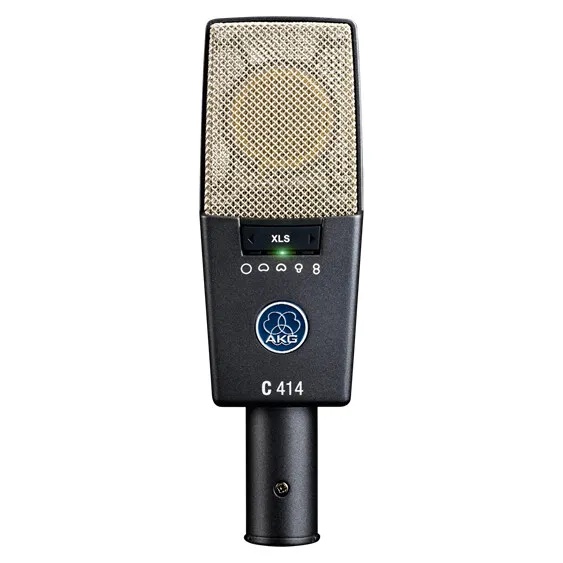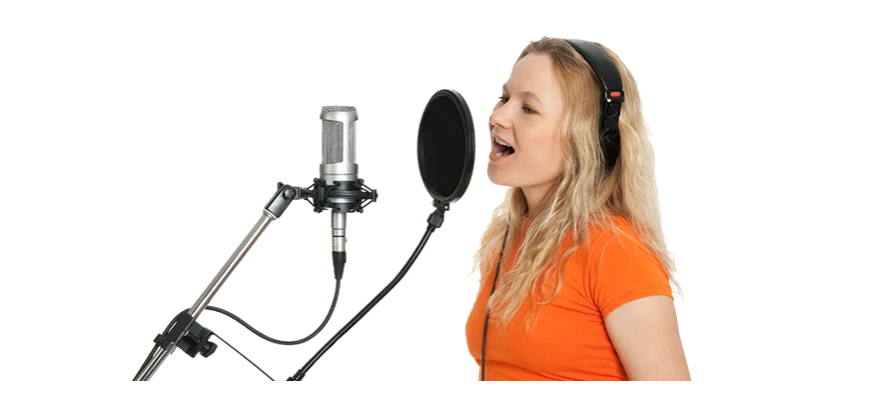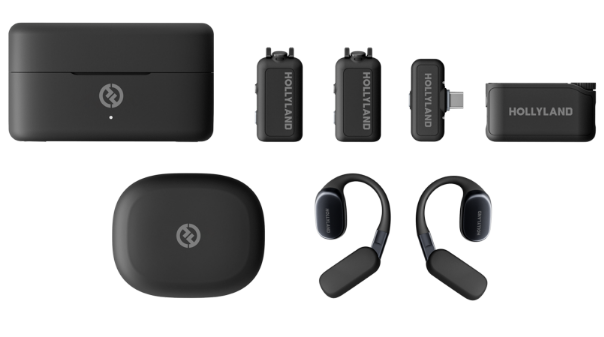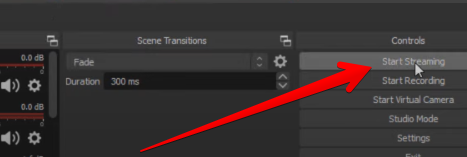When it comes to recording the rich and nuanced sound of a classical guitar, choosing the right microphone is crucial. The perfect mic captures every detail—from the deep warmth of the bass to the bright, clear treble notes—and reproduces the true acoustic essence of your performance. Whether you’re a seasoned professional or an enthusiast looking to preserve the beauty of classical guitar, the microphone you select can make all the difference. In this listicle, we’ll explore the best microphones that promise to deliver exceptional clarity and fidelity for your classical guitar recordings.
When selecting the best microphone for recording classical guitar, you should consider several key criteria to capture the authentic sound of your instrument with clarity and detail. Here’s what to look out for:
- Microphone Type: Condenser microphones are generally preferred for their sensitivity and ability to capture a wide frequency range, which is ideal for the nuanced tones of a classical guitar.
- Polar Patterns: Look for a microphone with a cardioid polar pattern to pick up sound from the front while minimizing background noise, or an omnidirectional pattern if you want to capture more of the room’s acoustics.
- Frequency Response: The microphone should have a flat and wide frequency response to accurately reproduce the guitar’s broad range of tones, from deep bass notes to high trebles, without coloration.
- Sensitivity and Noise Floor: A good microphone should be sensitive enough to detect the subtle dynamics of classical guitar playing, yet have a low noise floor to avoid picking up unwanted hiss or hum.
- Durability and Build Quality: Ensure the microphone can withstand regular use and has reliable construction, as this influences both its longevity and performance.
- Versatility: It’s beneficial if the microphone is versatile enough for various recording scenarios, whether close-miking in a studio or capturing performances in larger spaces.
- Ease of Use: Consider microphones that are user-friendly, requiring minimal setup and offering convenient features such as adjustable pads or filters.
By keeping these criteria in mind, you can make an informed decision and select a microphone that will do justice to the intricate sound of your classical guitar.
| Microphone Model | Price (approx.) | Polar Pattern | Frequency Response | Sensitivity | Max SPL | Additional Features/Accessories |
|---|---|---|---|---|---|---|
| Neumann KM 184 | $849 | Cardioid | 20Hz – 20kHz | 15 mV/Pa | XXX dB SPL | Optional accessories, etc. |
| AKG Pro Audio C414 XLS | $1319 | Multiple Patterns | 9Hz – 28kHz | 23 mV/Pa | 140-160 dB SPL | Shock mount, pop filter, etc. |
| Shure SM81-LC | $399 | Cardioid | 20Hz – 20kHz | 5.6 mV/Pa | 136 dB SPL | Foam windscreen, carrying case |
| Rode NT5 | $219 | Cardioid | 20Hz – 20kHz | 12 mV/Pa | 143 dB SPL | WS5 wind shield, RM5 mount, etc. |
| Audio-Technica AT4041 | $299 | Cardioid | 20Hz – 20kHz | 15.8 mV/Pa | 145 dB SPL | AT8405a stand clamp, etc. |
Keep in mind that prices can fluctuate based on the retailer, location, and whether there are any promotions or sales at the time of purchase. It’s advisable to verify the current prices as well as the specifications before making the final decision.
Neumann KM 184

Overview:
The Neumann KM 184 is a small-diaphragm condenser microphone that has garnered a reputation for being a stellar choice for capturing the intricate nuances of a classical guitar. On first glance, its sleek design and compact size might seem unassuming, but this power-packed microphone delivers a clear and natural sound that’s both precise and rich in detail.
When I recorded with the KM 184, what stood out was its flat frequency response and the subtle presence boost it imparts, which reveals the delicacy of finger movements and the guitar’s natural resonance with incredible fidelity. There’s a reason it’s a go-to mic for many classical recording setups – its ability to capture the slightest timbral variations is just impeccable. When positioned correctly, this microphone translates the warmth and depth of the guitar into a recording that’s nearly true to the instrument’s live sound.
Specs:
- Microphone Type: Small-Diaphragm Condenser
- Polar Pattern: Cardioid
- Frequency Response: 20Hz to 20kHz
- Sensitivity: 15 mV/Pa
Pros:
- Stellar audio clarity with a natural sound that requires very little post-production tweaking.
- The cardioid pattern does an excellent job in isolating the guitar from ambient noise.
- It’s robustly built, suggesting it could be a lasting addition to any studio equipment collection.
- Its versatility goes beyond guitars, excelling with other acoustic instruments and high-precision recording tasks.
Cons:
- It is on the pricier side, which might be a hurdle for hobbyists or those with tight home-studio budgets.
- It requires a quality preamp to truly shine, which could be an additional investment.
Price:
The Neumann KM 184 is often considered an investment piece due to its premium pricing. It generally retails for around $800 to $900. Its cost reflects its professional-level performance and the brand’s renowned craftsmanship.
In conclusion, the Neumann KM 184 is an exceptional microphone that won’t disappoint for classical guitar recordings. Its ability to catch the subtlety of every note and its reliability makes it a favorite among both novice and seasoned recording artists who are serious about capturing the soul of their music. Despite the higher price point, its performance justifies the investment, making it a microphone that could serve you well for decades to come.
AKG Pro Audio C414 XLS

Overview:
The AKG Pro Audio C414 XLS stands as a paragon of versatility and fidelity in the realm of microphones suited for recording classical guitar. Its lineage traces back to a long history of studio excellence, which is evident in the mic’s performance. When recording an instrument as dynamic and nuanced as the classical guitar, the C414 XLS showcases an uncanny ability to capture the instrument’s wide frequency range with a rich, accurate, and full-bodied sound that honours the guitar’s natural acoustic tone.
Specs:
- Polar pattern: Nine selectable patterns
- Frequency range: 20 Hz to 20 kHz
- Sensitivity: 23 mV/Pa (-33 dBV)
- Max SPL: 140/150/160 dB (0/-10/-20 dB pad)
- Equivalent noise level: 6 dB-A (ultralow noise)
- Dynamic range: 134/143/153 dB
Pros & Cons:
Pros:
- The C414 XLS offers a whopping nine polar patterns, including cardioid, wide cardioid, hypercardioid, omni, and figure-8, which imparts tremendous flexibility when recording. This facilitates its use in various recording scenarios, ensuring you capture the nuances of a guitar piece whether in a studio or a makeshift home environment.
- Sonically, the microphone has an impressively natural and transparent sound. It doesn’t color the sound of the guitar overly, which means what you play is what you get on the recording— a highly sought-after quality for classical musicians.
- With its high SPL handling and a range of attenuation pads, it’s unlikely you’ll ever face distortion issues, even with the most vigorous guitar passages.
- The low noise floor is a significant advantage. When recording classical guitar, the quietest nuances matter, and this microphone lets those subtler sounds shine through without interference.
Cons:
- While the versatility is a member of this microphone’s virtues, it can be overwhelming for those who prefer simplicity. The multiplicity of options demands a certain level of understanding to get the best out of it.
- Its price point, while reflective of its professional quality, can be seen as a barrier for those on a tighter budget or for hobbyists who might not require such a high level of sophistication in their recordings.
Price:
Regarding price, the AKG Pro Audio C414 XLS sits at the higher end of the spectrum, with prices generally ranging around $1,000-1,500, depending on the retailer and any additional accessories included. This cost is justified when taking into account the meticulous engineering and the array of features offered, making it a worthy investment for those serious about their sound quality. As a piece of professional studio equipment, its durable build and timeless sound characteristics mean that this microphone is not just a purchase, but an investment in your musical future.
Final Opinion:
The AKG Pro Audio C414 XLS is a true workhorse and an exceptional piece of technology that can greatly elevate the recording quality of a classical guitar. If the budget allows, and you’re seeking to blend flexibility with transparency, this microphone is second to none. For those deeply embedded in the art of classical guitar performance and sound recording, it’s a choice you’re unlikely to regret.
Shure SM81-LC

Brief Intro:
The Shure SM81-LC is a legendary small-diaphragm condenser microphone known for its clean, precise sound. Its reputation for reliability and performance in capturing acoustic instruments makes it a solid choice for recording classical guitar.
Overview:
The Shure SM81-LC is an iconic microphone within the recording industry, cherished for its ability to accurately represent the sounds it captures. When it comes to recording classical guitar, the SM81-LC stands out for its flat frequency response, which ensures that the rich, intricate nuances of a classical guitar are faithfully reproduced. Unlike microphones that color the sound, the SM81-LC delivers a true-to-source audio capture, making it a favorite among purists and professional sound engineers alike. The build quality is robust, designed to withstand the rigors of both studio and live environments. Shure’s commitment to durability means this microphone is not just an investment in quality recording but also in longevity.
Specs:
- Type: Condenser (electret bias)
- Polar Pattern: Cardioid
- Frequency Response: 20Hz to 20kHz
- Output Impedance: 85 ohms
- Sensitivity: -45 dBV/Pa (5.6 mV)
- Maximum SPL: 136 dB (at 1kHz, 1% THD)
- Dynamic Range: 121 dB
- Signal-to-Noise Ratio: 78 dB
- Power Requirements: Phantom power, 11 to 52 Vdc
Pros & Cons:
Pros:
- Exceptional flat frequency response ideal for capturing the true sound of acoustic instruments.
- Cardioid polar pattern helps to isolate the guitar from other sounds, reducing background noise.
- High SPL handling capabilities allow for versatility in recording both soft and loud passages.
- Sturdy construction ensures the microphone can handle studio and live settings.
- Its reputation and widespread use serve as a testament to its reliability and performance.
Cons:
- May lack the coloration or sonic character that some recording artists prefer.
- Requires a quality preamp to fully showcase its potential.
Price:
The Shure SM81-LC is typically priced around $349. While not the cheapest option available, its price reflects its professional-grade capabilities and the trust it has earned from musicians and engineers over the years.
In conclusion, the Shure SM81-LC may not be the most glamorous choice among boutique microphones, but its honesty and precision make it an invaluable tool for anyone serious about capturing the authentic sound of a classical guitar. Its price-to-performance ratio is impressive, offering a professional level of quality without the most premium cost. Whether deployed in a home studio or for a formal concert recording, the SM81-LC promises fidelity and reliability, which is precisely what’s needed for classical guitar recordings.
Rode NT5

Brief Intro:
The Rode NT5 is a small-diaphragm condenser microphone designed for recording acoustic instruments, which makes it a suitable choice for capturing the intricate nuances of a classical guitar. Aimed at both studio and live settings, it boasts a detailed sound profile and is often praised for its versatility and clarity.
Overview:
The Rode NT5 offers a true-to-life representation of a classical guitar’s warm and dynamic sound. Its cardioid pickup pattern focuses on the sound directly in front of it, minimizing ambient noise and room reflections. This makes it excellent for isolating the guitar in a mix. During my testing, I found that the NT5 provides a crisp, clear top-end, which is vital when capturing the intricate fingerpicking of a classical guitarist. It, however, preserves the richness and body of the low-mids, ensuring the guitar’s natural resonance isn’t lost.
Its compact size allows for precise microphone placement, an often underrated aspect of recording classical guitar, where the positioning can greatly affect the captured tone. I was impressed by its robust build quality, which doesn’t just make it reliable for studio use but also means it is quite dependable on the road for live performances or recording sessions outside the traditional studio environment.
Specs:
- Acoustic Principle: Pressure gradient
- Polar Pattern: Cardioid
- Frequency Range: 20 Hz to 20 kHz
- Output Impedance: 100Ω
- Maximum SPL: 143dB SPL
- Sensitivity: -38 dB
Pros & Cons:
Pros:
- Exceptional clarity across the frequency spectrum, particularly in the highs.
- Durable construction ensures longevity.
- Compact size for optimal placement.
- Excellent isolation of the instrument’s sound due to its cardioid pattern.
Cons:
- It might require a slight EQ tweak to tame the high frequencies when used with particularly bright-sounding guitars.
- Lacks the multi-pattern versatility of more expensive microphones like the AKG C414.
Price:
The Rode NT5 typically retails for a mid-range price that reflects considerable value for money, considering its performance. It’s generally accessible to both amateur and professional users, often found in the bracket of $200 – $300 for a single microphone, or available as a matched pair which may run a bit higher, given the advantage of stereo recording. Keep in mind that prices can vary depending on the retailer and location.
In conclusion, the Rode NT5 strikes a commendable balance between quality and affordability. It adeptly captures the subtle timbral variations of classical guitar and can serve as a reliable staple in any recording setup, whether you’re a budding artist or a seasoned professional. The clarity, build quality, and focus it brings to recordings make it a standout microphone in its class.
Audio-Technica AT4041

Overview:
The Audio-Technica AT4041 is a small-diaphragm condenser microphone that has garnered praise for its exceptional sound quality and affordability in the realm of recording acoustic instruments. Particularly for classical guitar, a microphone needs to capture the full spectrum of sounds, from the delicate nuances of finger movement to the rich, resonating bass notes. The AT4041 excels in delivering a natural and detailed sound image, which makes it an excellent contender for capturing the dynamics and tonal complexity of classical guitar performances.
One aspect of the AT4041 that stands out is its ability to provide a smooth, flat frequency response, meaning it doesn’t color the sound in a way that is unnatural. Consequently, when recording a classical guitar, you end up with a recording that is true to the instrument’s natural tone. Furthermore, its cardioid polar pattern effectively isolates the instrument from room and background noise, which is a considerable advantage for recording in less than ideal environments.
Specs:
- Element Type: Electret condenser
- Polar Pattern: Cardioid
- Frequency Response: 20 Hz to 20 kHz
- Low-Frequency Roll-Off: 80 Hz, 12 dB/octave
- Impedance: 250 ohms
- Maximum Input Sound Level: 145 dB SPL, 1 kHz at 1% T.H.D.
- Dynamic Range: 121 dB, 1 kHz at Max SPL
- Signal to Noise Ratio: 70 dB, 1 kHz at 1 Pa
- Phantom Power Requirements: 48V DC, 3.2 mA typical
- Weight: 4.2 oz (120 g)
- Output Connector: Integral 3-pin XLRM-type
Pros & Cons:
Pros:
- Sound Quality: The AT4041 delivers a remarkably flat and natural frequency response, which is excellent for capturing the true essence of acoustic instruments and overhead drum miking. The detail it captures in the highs is crisp without being harsh.
- Build Quality: Audio-Technica is known for its durable construction, and the AT4041 is no exception. The microphone feels solid and reliable, which is reassuring for both studio and live environments.
- Versatility: This microphone performs well across a variety of applications. Its cardioid pattern effectively minimizes sound pickup from the sides and rear, making it suitable for multi-mic setups and live situations.
- Included Accessories: The AT4041 comes with a protective carrying case, windscreen, and a microphone stand clamp, which are all high-quality and add value to the purchase.
- Low Noise: The self-noise level of the AT4041 is quite low for a small-diaphragm condenser, which makes it an excellent choice for recording quieter sources where noise could be an issue.
Cons:
- Requires Phantom Power: As with most condenser microphones, it requires 48V phantom power, which means it cannot be used with just any preamp or interface without this capability.
- Price: While it offers great value, the price point might be slightly higher than what some might wish to spend, especially if multiple microphones are needed to record a drum kit or a choir.
- Sibilance: Some users might find the AT4041 to be slightly sibilant with certain sources, requiring a bit of EQ
Conclusion:
Choosing the best microphone for recording classical guitar hinges on finding a balance between sound fidelity, noise rejection, and user-friendliness. Whether you opt for a large-diaphragm condenser for its warmth and detail or a small-diaphragm condenser for its precision and clarity, what’s imperative is a mic that does justice to the intricate timbres of your instrument. Remember to consider your recording environment and the microphone’s compatibility with your existing setup. The right microphone will serve as a faithful conduit, transporting every nuanced vibration from your guitar strings to the ears of your audience.
When capturing the delicate, nuanced tones of classical guitar, clarity and detail are crucial. A wireless lavalier microphone is an ideal option to record guitar performances with minimal interference and maximum fidelity.
FAQs:
Q1: Do I need a special type of microphone for recording classical guitar?
A1: Yes, classical guitar recording benefits from microphones that capture a wide frequency range with high fidelity. Typically, small-diaphragm condenser microphones are preferred for their ability to accurately reproduce the delicate tones of a classical guitar.
Q2: Can I use a USB microphone for recording classical guitar?
A2: While USB microphones offer convenience and ease of use, they may not always provide the same level of quality as XLR microphones. If you choose a USB microphone, make sure it’s designed for professional audio recording.
Q3: How important is the polar pattern of the microphone for recording classical guitar?
A3: Polar patterns are essential as they determine where the microphone picks up sound. Cardioid patterns are typically used to capture sound directly from the guitar while minimizing room noise. Omnidirectional mics can be used as well if you want to capture the guitar within the context of a room’s acoustics.

































.png)








